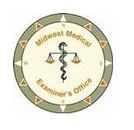
Commentary
from Dr. A. Quinn Strobl, Chief Medical Examiner for the Midwest Medical
Examiner’s Office
As an
enthusiastic supporter of electronic death certification, I was asked to write
a brief commentary regarding the benefits of electronic death certification and
cremation authorization. As I was thinking about what to write, I received a
cremation authorization on our fax machine where the entire funeral home
section of the cremation form was obliterated by some mechanical error.
The time spent attempting to track down the funeral home and approve the
cremation was frustrating and delayed the process for the family and
funeral home.
Our office
approved almost 5,000 cremations last year, the majority of which were approved
through paper process. We understand cremations are needed promptly, and
funeral directors often express frustration with how long it takes for some
forms to be approved. Let me give the Medical Examiner’s perspective on why
this can occur. Faxing a paper form among three agencies (clinic, funeral home,
and the ME office) is fraught with potential complications, including:
illegibility due to handwriting or transmission issues; busy signals; paper
jams or empty paper trays; and, rarely, misplacement of the fax with
concurrently transmitted medical records. Our office handles multiple calls
every day, attempting to track that piece of paper. To complicate activities
further, sometimes we are asked by funeral home personnel to fax a cremation
again – to the number where the funeral director is physically located, which
was not the same number on the form! Finally, after the death certificate is
filed and usually days after we approve the paper form, we log into the
Minnesota Registration and Certification System (MR&C) to electronically
authorize the disposition for the death record. Many of the challenges,
complications, and duplications brought about by the paper approval process
could be eliminated with everyone using and checking the same online record.
Like other
ME offices, we are collaborating with the Office of Vital Records (OVR) on ways
to maximize MR&C. OVR has been receptive to ideas for future improvements
and implementing improvements we’ve suggested. We are hopeful that the Paper
Cut Project (see May
2016 Vital Records News) will increase efficiency. We think that funeral
homes seeing the status of the death record and its cremation approval at all
times is an enhancement that will help all of us. Using MR&C for real time
status checks will let the funeral director know whether the approval is
in the queue of the ME office or clinic, reducing the time spent tracking the
approval process through repeated calls, emails and faxed inquiries.
Regarding
death certificates, electronic death certification is not just about saving
time (and trees). The online record also assists the clinician with how to
arrange the cause of death statement and advises certifiers not to use uninformative
causes such as ‘cardiac arrest’ or confusing abbreviations. Hopefully, future
MR&C programing will error proof registration even more by minimizing
abbreviations prompting the physician to put a disease or condition in the
blank. MR&C already reminds the filer when certain words or selections
of manner of death should be referred to the medical examiner or coroner. When
the physician follows the cue and lets MR&C refer the record to the medical
examiner or coroner, the record can be reviewed and approved or assumed by the
medical examiner/ coroner and the cause of death finalized.
Electronic
records are more efficient and accurate. Using MR&C for death registration
and disposition authorization saves time and effort on all sides. Let’s
all work together to get all coroners, medical examiners, funeral homes, and
physicians online.
Since
2009, Dr. Strobl has led the Midwest Medical Examiner’s Office as the Chief
Medical Examiner. She has been practicing as a forensic pathologist since
completing her fellowship in 2005. Dr. Strobl is board certified in anatomic,
clinical, and forensic pathology. The Midwest Medical Examiner’s Office,
located in Ramsey, Minnesota, is the official medical examiner/coroner for 20
Minnesota counties, including: Anoka, Benton, Carlton, Carver, Chippewa,
Chisago, Douglas, Isanti, McLeod, Meeker County, Mille Lacs, Pine, Renville,
Sherburne, Sibley, St. Louis, Swift, Todd, Wright, and Yellow Medicine
County.
|